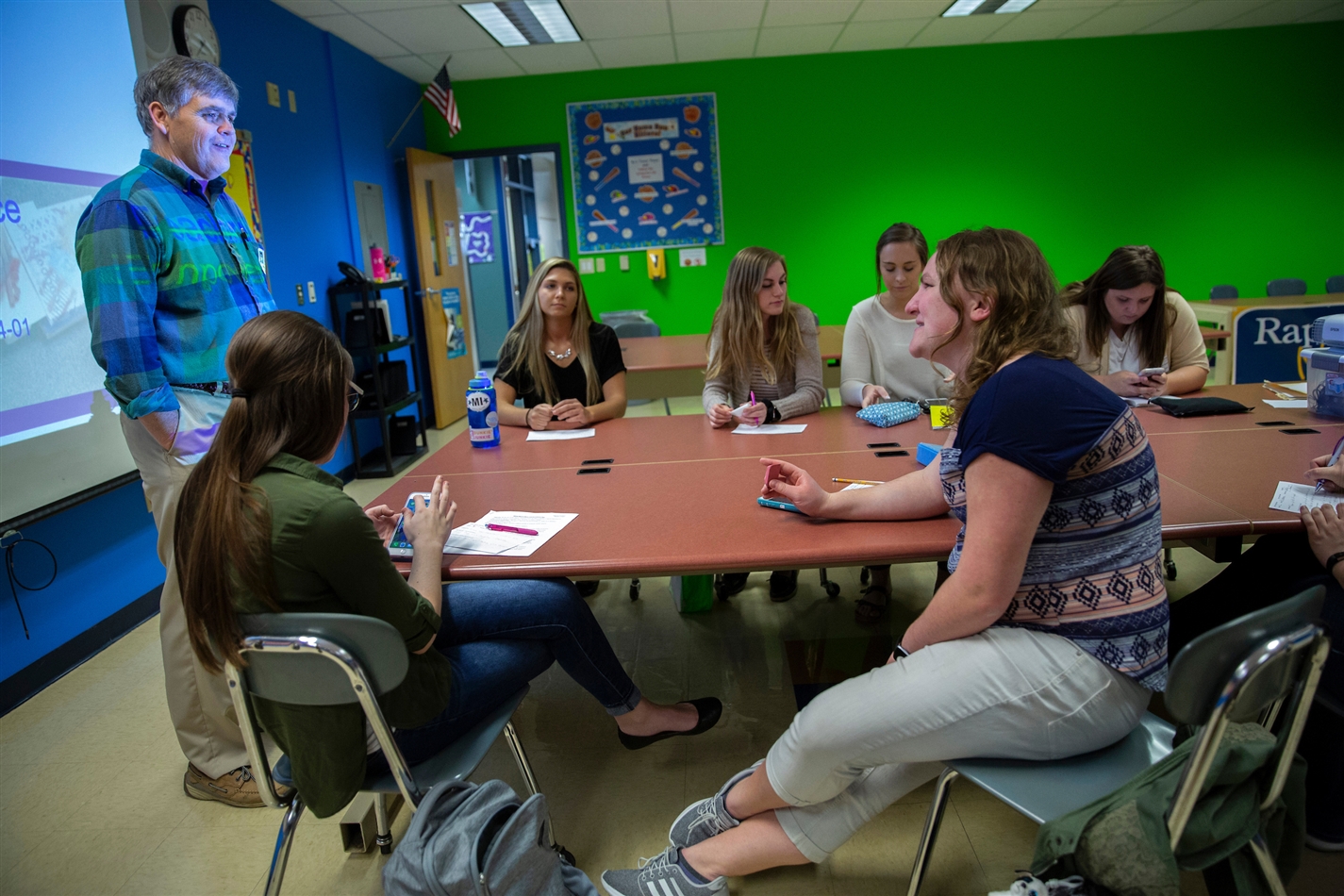Social Studies
Student Lessons
Student Lesson Plans from the Class of 2019-2020
Please review these UW-Whitewater social studies student lesson plans. These lesson plans were created by students in Dr. James Hartwick's Methods of Teaching Social Studies course. Please feel free to modify and use these lesson plans in your classroom.
Please review these quality inquiry lesson models. The models were created by students in Dr. James Hartwick's Methods of Teaching Social Studies course. Please feel free to browse the models and use them in your own classroom.
An Inquiry lesson asks students to generate hypotheses about the answer to a contested question, and then presents them with data to support or undermine those hypotheses.
Inquiry Lessons
Are you looking for a new way to actively engage students in examining important historical questions? Listed below are abstracts and links to lesson plans following the "Inquiry" model. An Inquiry lesson asks students to generate hypotheses addressing an important, but debatable, historical question, and then presents students with relevant data to support or undermine potential hypotheses. Ultimately, students ferret through the evidence and generate a well supported conclusion or answer to the historical question. The inquiry lessons identified below ask students to analyze and interpret the primary and secondary sources, including sources obtained from the Library of Congress' Digital Collections.
These lesson plans were created by students in Dr. James Hartwick's Methods of Teaching Social Studies course at the University of Wisconsin-Whitewater. If you are interested in using inquiry in your classroom, this website provides you several complete inquiry lessons! Please use and modify these lessons as you see fit.
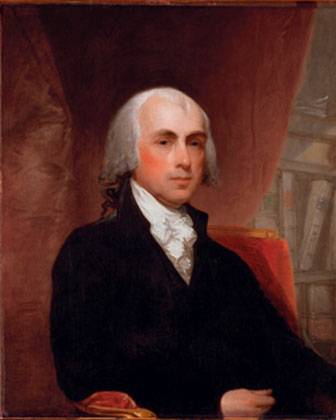 |
Socratic Seminar: The Federalist No. 10(click here for corresponding poster) In the late 1780s, vigorous debate ensued as to what the new Constitution of the United States should look like. In the debate over what the Constitution should look like, two competing parties emerged: the federalists and the anti-federalists. The federalists believed in a strong national government, whereas the anti-federalists were fearful of giving too much power to the national government in the wake of being ruled by the British monarchy. To quell the fear of the anti-federalists, prominent federalists such as James Madison, Alexander Hamilton, and John Jay wrote 85 anonymous articles for the New York Journal in 1787 and 1788 explaining their position. In The Federalist, Paper No. 10, James Madison articulates why factions are a threat to civil society and also goes on to describe the differences between a direct democracy and a republic, while examining why a republic is better equipped to reduce the threat of powerful factions. The central question of this unit is: Why does James Madison believe factions are a threat to civil society? This Socratic Seminar allows students to discuss not only what factions are and if they feel they are a threat, but it also provides them with a forum for analyzing the differences between a direct democracy and a republic. Additionally, this exercise gives students the opportunity to examine different forms of government and explore their own conception of what a good form of government should look like while utilizing higher order thinking skills and deep knowledge. - Created by Dan Miller |
 |
What caused the Passenger Pigeon's extinction and why did it happen so quickly?(click here for corresponding poster) The once most numerous species of bird the world has ever known, who's migrations during the springtime would blacken the midday sky. The Passenger Pigeon was rapidly driven into extinction during the late nineteenth century. How could this have happened and what were the main factors in the Passenger Pigeon's demise and eventual extinction? Prior to westward settlement, the Passenger Pigeon’s migrations in spring were unimpeded. These migration routes were dependent on large food sources to support the great bird numbers, estimated by ornithologists like Wilson and Audubon to be as high as three to five billion. The Passenger Pigeon’s natural characteristics met head on in conflict with America’s population and expansion growth. The Pigeon’s reproductive features allowed only one offspring annually, abandonment during the reproductive process ensured the offspring’s demise, and the reproductive period also left the Pigeon most vulnerable to kill by hunters. As the American population and expansion moved westward, the Pigeon’s habitat became pinched between the western plains and the new agrarian lands by the settlers. At the same time the Pigeon’s natural habits, such as migrating in close proximity and destroying the settler’s agriculture made them an easy target for kill, practically and justifiably. - Created by Daniel Lansing |
Please review these quality inquiry lesson models. The models were created by students in Dr. James Hartwick's Methods of Teaching Social Studies course. Please feel free to browse the models and use them in your own classroom.
An Inquiry lesson asks students to generate hypotheses about the answer to a contested question, and then presents them with data to support or undermine those hypotheses.
Primary Source Lessons Using Resources from the Library of Congress
Are you looking for a new way to actively engage students in examining important historical questions? Listed below are abstracts and links to lesson plans following the "Inquiry" model. An Inquiry lesson asks students to generate hypotheses addressing an important, but debatable, historical question, and then presents students with relevant data to support or undermine potential hypotheses. Ultimately, students ferret through the evidence and generate a well supported conclusion or answer to the historical question. The inquiry lessons identified below ask students to analyze and interpret the primary and secondary sources, including sources obtained from the Library of Congress' Digital Collections.
These lesson plans were created by students in Dr. James Hartwick's Methods of Teaching Social Studies course at the University of Wisconsin-Whitewater. If you are interested in using inquiry in your classroom, this website provides you several complete inquiry lessons! Please use and modify these lessons as you see fit.
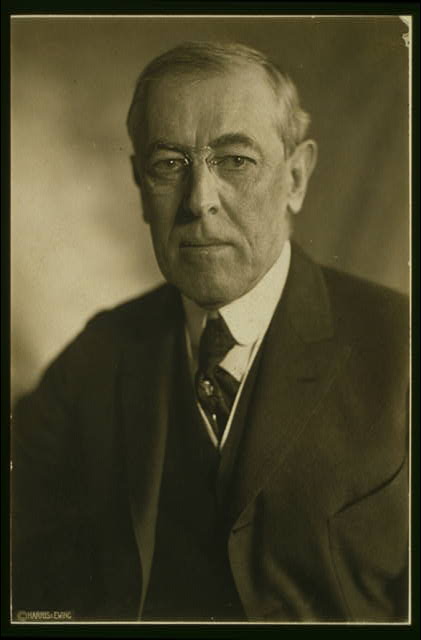 |
What led the United States to enter into World War One?July 28, 1914 the First World War began with the declaration of war on Serbia by the Austro-Hungarian Empire. In short order, the European alliance system compelled the continent's nations to join the fray, and on August 4, with Britain's declaration of war on Germany, all the Great Powers of the world were involved in what would become the deadliest conflict in human history to that point - all but one that is. Also on August 4, United States President Woodrow Wilson addressed Congress with a declaration of neutrality, a position favored by the majority of the American population. His address recognized the cultural connection the people of the nation had to both sides in the conflict, and he warned against partisanship, that "every man who really loves America will act and speak in the true spirit of neutrality." Yet the United States would not be able to maintain its neutrality. After two and a half years of pressures to join the war, Wilson sought a declaration of war from Congress which was granted April 6, 1917. Historians still debate the primary reason behind the president's decision. Thus, students will review primary and secondary documents that cover many of the perceived motives for the declaration of war in order to form a conclusion to the central question: What led the United States to enter into World War One?- Created by Andrew Fletcher |
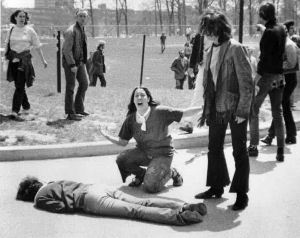 |
What was the cause of the Kent State Shooting?The Vietnam Era is arguably one of the most controversial periods of American history. The country was divided and political unrest was rampant across the country. Students had taken on the role of activist, and nowhere was that more apparent than college campuses. This political unrest came to a head on May 4, 1970 in Kent, Ohio. On this day a shooting at Kent State University took 4 lives and injured nine others. Not only did this event lead to a student strike that closed hundreds of high schools and universities but it further divided public opinion and highlighted the severe strain that the Vietnam War was taking on all Americans. Today, more than 40 years later there is still conflict over what happened. The question that so many are still trying to answer is: What was the cause of the Kent State shooting? The following inquiry lesson is designed to engage students in higher order thinking, deep knowledge, and substantive conversation with their peers. Inquiry based instruction is important in the classroom because it helps keep lessons authentic, and provides students more freedom and creativity in developing content knowledge while reinforcing basic and advanced skills.- Created by Stacie Sheppard |
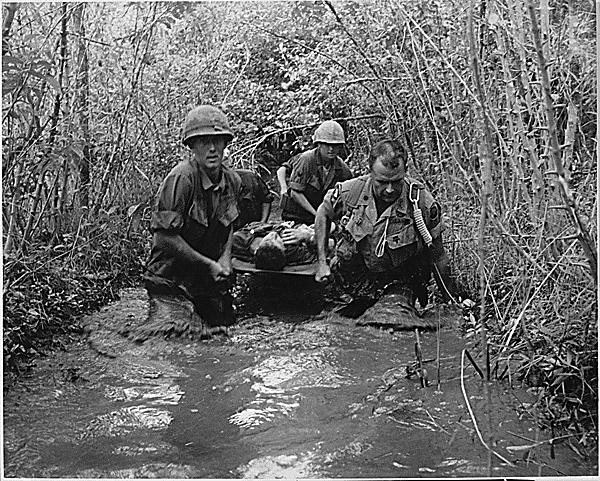 |
Why was the Vietnam War so Controversial?In March of 1965, President Lyndon B. Johnson sent the first U.S. combat troops into South Vietnam to fight the spread of Communism from North. The casualties of this long war, from both sides, were extensive and brutal due to guerilla warfare and the use of chemical weapons. This information was televised in detail, sparking anti-war movements and weakening the morale of Americans fighting in Vietnam. Also known as "America's Longest War," U.S. involvement in Vietnam War did not end until 1973. Although the United States won the war in a numerical sense, having far less casualties than North Vietnam, the U.S. did not accomplish what they had set out to do. The Communist North took control of South Vietnam. Students will critically analyze the primary and secondary sources provided in order to generate hypotheses and formulate and support a conclusion to the inquiry question: Why was the Vietnam War so controversial?- Created by Kimberly Gombosi |
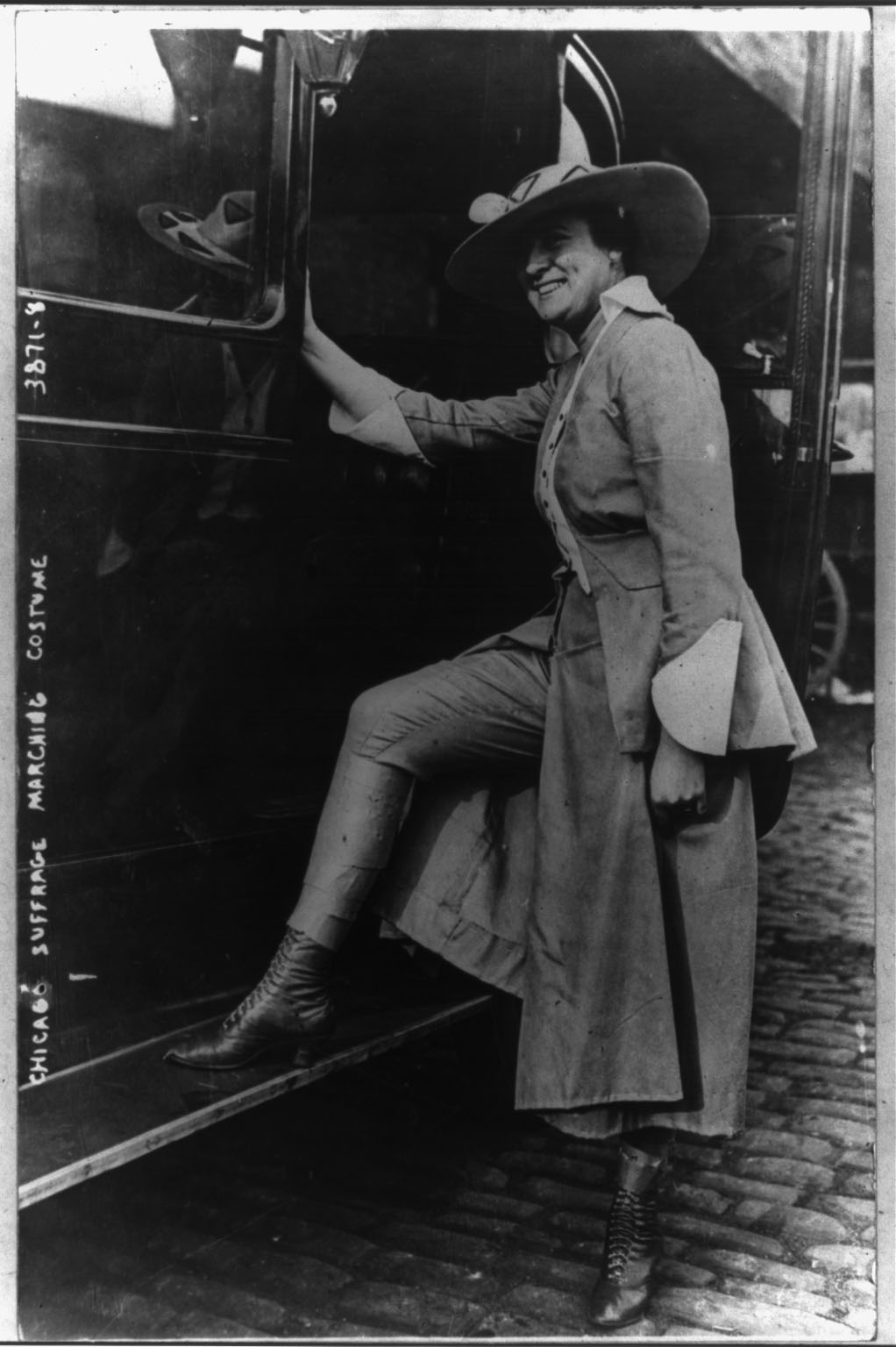 |
How did women attain suffrage?Throughout United State history women have worked to gain freedom and equality. Through this evolution of women's rights a defining moment, most often recognized as the first step in the right path towards equality, took place when the Nineteenth Amendment was ratified on August 18, 1920. This amendment prohibits any United States citizen from being denied the right to vote based on sex. What is more interesting than just the ratification of the Nineteenth Amendment were the trials and tribulations women went through to officially gain the right to vote in the United State of America. Through this journey how did women finally gain the right to vote in the United States of America?- Created by Stephanie Mayer |
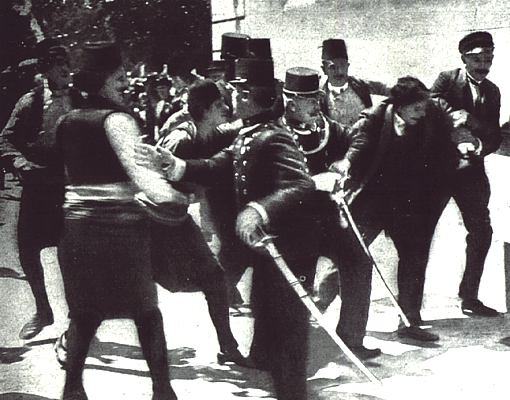 |
The assassination of Archduke Franz FerdinandWorld War I was one of the most terrible and deadly wars in human history. The collapse of old international treaties as well as the obligations of some of those treaties would bring many non-warring nations into the fight. Intended for an upperclassmen history course, this inquiry lesson engages students in hypothesizing, evaluating, and generating a tentative conclusion on the causes of WWI.-Created by Flannery Crain |
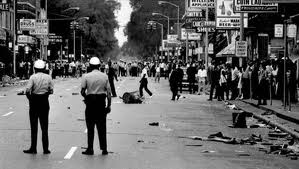 |
What caused the riots of 1967 in Detroit?The racial conflict of the 1960s caused tensions between both whites and African American peoples in the United States that have lasted into the current affairs in cities like Detroit, Michigan. This inquiry designed for a senior level civics course would look at the effect of social unrest and unintentional of the modern city and the access to resources and job information. It will have students looking into the question of "What caused the riots of 1967 in Detroit?"- Created by Samantha Peterson |
Structured Academic Controversy (SAC)
The Structured Academic Controversy (SAC) model is a well-established cooperative group discussion procedure designed to help students explore the major arguments for and against the controversial public issue being addressed. Through this process, students have the opportunity to work in small groups to examine and present both sides of an argument, allowing for the thorough exploration of the issue. By engaging in a SAC lesson, students learn to thoughtfully analyze and respectfully discuss both sides of an issue. They also practice listening and talking with their peers to generate consensus on something on which they can all can agree. Students grappling with important controversial public issues and practicing collaborative citizenship skills prepares them to be thoughtful individuals who work for the common good.David Johnson and Roger Johnson, Creative Controversy: Intellectual Conflict in the Classroom (3rd ed.) (Edina, MN: Interaction, 1995).
 |
Publicly Funded Sports StadiumsOver the past three decades, the debate about whether professional sports stadiums has been highly controversial issue within communities around the country. Intended for an upper level civics course, this lesson allows students to compare opposite viewpoints, analyze, and construct their own conclusion on the issue of publicly financed stadiums.- Created by Lance Scholze |
Please review these quality inquiry lesson models. The models were created by students in Dr. James Hartwick's Methods of Teaching Social Studies course. Please feel free to browse the models and use them in your own classroom.
An Inquiry lesson asks students to generate hypotheses about the answer to a contested question, and then presents them with data to support or undermine those hypotheses.
Primary Source Lessons Using Resources from the Library of Congress
Are you looking for ways to actively engage students in analyzing primary sources while addressing important historical topics? Using and analyzing primary sources not only builds historical content knowledge, but also cultivates historical and critical thinking skills that will enable students to become thoughtful individuals and competent citizens. The lessons below engage students in analyzing, interpreting, and drawing inferences from primary sources. These lessons draw several primary sources from digital collections housed at the Library of Congress.
These lesson plans were created by students in a special course, Professional Collaboration, Inquiry & the Library of Congress' (LOC) Digital Collections (GIGENRL 494/694), offered by Dr. James Hartwick in the Spring of 2011 at the University of Wisconsin-Whitewater. Special funding to support the course was obtained from the Midwestern Center for Teaching with Primary Sources.If you are interested in using these primary source lessons in your classroom, this website provides you several complete lessons. Please use and modify these as you see fit.
 |
The Near Extinction of the Great Plain's Buffalo and the Effect on Native AmericansThe near extinction of the North American buffalo has been widely studied; this lesson is a more unique approach to discovering how integral the buffalo was to the Native American population of the Great Plains. The students will explore how the buffalo was utilized and revered by the Native American tribes versus how the buffalo was harvested by the trading companies. This harvesting was sponsored by the United States government in an effort to decimate the buffalo, and subsequently the Native American tribes. This lesson will encourage the students to work in a group while examining both primary and secondary sources in order to answer the essential questions; How was the buffalo used by the Native American tribesmen of the Great Plains, What caused the downfall of the buffalo, and What was the effect on the Native American tribes that relied on the buffalo?- Created by Micah Loomer |
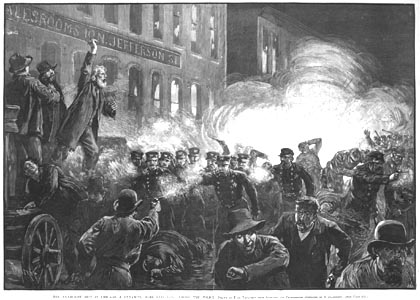 |
Haymarket!On May 4, 1886, labor movement protestors clashed with Chicago police resulting in the death of seven officers, an untold number of protestors, and eventual murder convictions of eight radical labor leaders. The protest was one of many springing-up around the nation as labor unrest grew in response to difficult working conditions and economic depression. Seven years later, Chicago Mayor Altgeld pardoned those protest leaders who were still alive. This lesson plan employs a variation of the INQUIRY INSTRUCTIONAL MODEL for exploring some of the issues surrounding the Haymarket Riot. It is intended to guide students through the process of inquiry as though it were a game of "Clue". The material is presented as a role-play game to motivate young learners and ease them into what is, perhaps, their first inquiry-based learning experience in a Social Studies classroom.- Created by Lori Hoyt with the guidance of Timothy Babcock (Cooperating Teacher) |
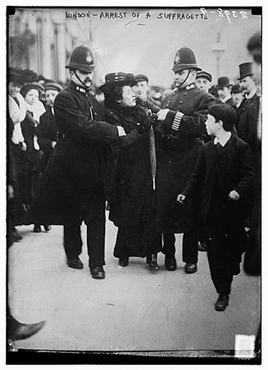 |
Women's Fight for EqualityThis unit on women in US History examines gender roles, gender stereotypes, and interpretations of significant events in women's history. This leads students to discover gender roles in contemporary society.- Created by Scott Gudgel with the guidance of Katy Mullen (Cooperating Teacher) |
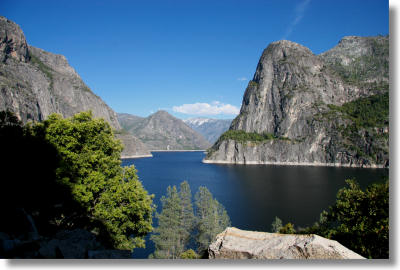 |
How was the Hetch-Hetchy Valley Flooded?This lesson is designed to engage students in the Hetch-Hetchy controversy from early in the last century by utilizing primary sources found at the Library of Congress's website. Students will analyze and evaluate the primary sources one at a time with the ultimate goal being to conclude which of these events was the primary cause of the eventual damming of the Hetch-Hetchy Valley by the O'Shaugnessy Dam. By engaging in the actual relics of the era, students will gain a more complete understanding of both the particular events of the Hetch-Hetchy controversy and also gain a solid understanding of the Progressive Era itself. Students will gain skills in research, primary source analysis, hypothesis writing and analyzing people and events to make historical judgments about this particular era and event.- Created by Matthew Bright |
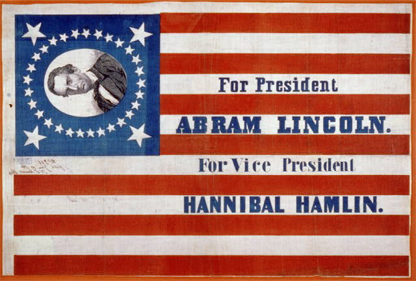 |
Analyzing Presidential Campaign PropagandaThroughout the political history of the United States, campaign propaganda and techniques have changed as new forms of media developed. Through the use of a primary source analysis tool provided by the Library of Congress, students will examine and interpret various presidential commercial ads and political cartoons from 1952 to 2008 and analyze how different strategies shape public opinion today. Through their analysis students will describe, reflect, and question various media tactics. Furthermore, students will summarize their findings and provide examples to the question: "Through the use of presidential commercial ads and political cartoons, what strategies are used in influencing public opinion in the United States during campaigns and elections?"-Created by Danny Cochran |
 |
Why is the Vietnam War so Controversial?The United States was in the early years of the Cold War with the Soviet Union. Ho Chi Minh had quickly gained power and popularity in the country of Vietnam for his efforts to gain the country's independence from France. The United States was not ready to go to war with Ho Chi Minh. However, with the Truman Doctrine being written the United States would shortly find themselves involved. The involvement started to a basic alliance with France by giving them supplies and weapons, but quickly escalated into U.S. presence in a full out war. Perhaps the steps taken to start the war are one reason the Vietnam War has become known as one of the most controversial wars in history, but what specific things contributed to this horrible war? It is important for students to have good, solid knowledge about what the Vietnam War was and why is occurred, but it can be argued that it is just as important for students to understand and analyze the importance behind the events of the war that make it such a controversial time in world history.- Created by Rachel Armbrust |
 |
Darfur: A Plan of ActionThe research topic for this lesson plan is the issue occurring in Darfur, a region located in Sudan, Africa. The research for this lesson plan was conducted and demonstrated at Fort Atkinson High School in Fort Atkinson, Wisconsin. The overall intent of this poster is to demonstrate how this lesson uses the Library of Congress to promote inquiry-based skills. By locating primary and secondary sources from Library of Congress, students were able to work on a plan of action, or solution, to the issues in Darfur (based from the viewpoint of the specific group that they were assigned to; how was the group involved in the issue, what was their viewpoint, what do they value?). Students then made a presentation to the class, explaining their solution and what they had found to support this.- Created by Kaleigh Lueker with the guidance of Todd Carter (Cooperating Teacher) |
 |
The Age of ExplorationThe Age of Exploration was an instrumental time in World History. The Renaissance & Age of Enlightenment was making impacts on virtually every person, rich or poor, throughout Europe. Mankind craved to know what more there could be in the world. The beginnings of a worldwide economy started to appear. Knowledge was gained and spread though trade & exploration. Students will investigate maps, documents and pictures to draw conclusions and find the inter-relationships of map making, treaties, explorations, trade routes, an economics on a new, changing, and ever-increasing world.- Created by Steve Steinke |
Analyzing Political Cartoons: Preparing for the AP US Government and Politics ExamAs students prepare for the Adavanced Placement US Government and Politics Exam, use this lesson to help with reading and interpreting political cartoons.- Created by Katy Mullen |
|
 |
Developing Historical Analysis Skills through Early American DocumentsThe main objectives of the following activities are to understand the process of creating a plan for government and debate the balance between national, state and individual rights. The lessons for this unit emphasize using primary sources to examine the challenges faced in creating a government in the United States. Lessons one and two focus on a study of the Declaration of Independence and the Constitution and provides access to primary source documents from the Library of Congress. Lesson three investigates important issues which confronted the first Congress when deciding which ideas to include in a Bill of Rights.- Created by Bill Plant |
 |
D-DayThis is a unit that will add to high school students' understanding of D-Day, as well as the events that led up to it, the personalities involved in it, and the historical significance of it. I have drawn on a variety of primary sources to enhance the lesson, and I believe students will enjoy the weeklong unit. I also supplement videos with this lesson, and it could take two weeks to complete with additional resources and videos, which, if you have time would enhance the learning experience further. If you have any questions, please feel free to contact me at crotsv@mail.milton.k12.wi.us.- Created by Val Crofts |
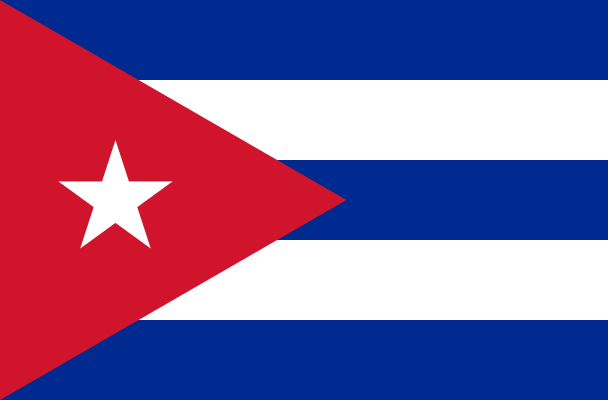 |
Cuban Missile CrisesSpeech Questions - Created by Marisa Piper-Zahn |
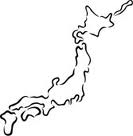 |
Japanese Internment- Created by Marisa Piper-Zahn |
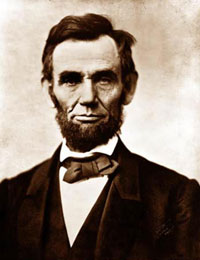 |
Lincoln's Assassination- Created by Marisa Piper-Zahn |
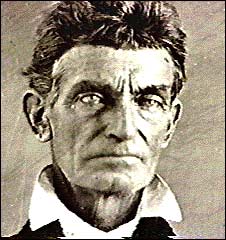 |
John Brown- Created by Marisa Piper-Zahn |
 |
Kids, Propaganda, and World War II Primary Resource Analysis- Created by Marisa Piper-Zahn |
Please review these quality inquiry lesson models. The models were created by students in Dr. James Hartwick's Methods of Teaching Social Studies course. Please feel free to browse the models and use them in your own classroom.
An Inquiry lesson asks students to generate hypotheses about the answer to a contested question, and then presents them with data to support or undermine those hypotheses.
Inquiry Lessons
Are you looking for a new ways to actively engage students in examining important historical questions? Listed below are abstracts and links to lesson plans following the "Inquiry" model. An Inquiry lesson asks students to generate hypotheses addressing an important, but debatable, historical question, and then presents students with relevant data to support or undermine potential hypotheses. Ultimately, students ferret through the evidence and generate a well supported conclusion or answer to the historical question. The inquiry lessons identified below ask students to analyze and interpret the primary and secondary sources, including sources obtained from the Library of Congress' Digital Collections.
These lesson plans were created by students in Dr. James Hartwick's Methods of Teaching Social Studies course at the University of Wisconsin-Whitewater. If you are interested in using inquiry in your classroom, this website provides you several complete inquiry lessons! Please use and modify these lessons as you see fit.
Inquiry Lesson Plans from 2009/10
 |
Why did the United States Enter World War I?While the sinking of the Lusitania is the most common excuse for why America finally decided to enter World War I, there were a number of other factors that pushed America into the war. Economic ties, political beliefs, and an intercepted telegram made staying out of the war nearly impossible for the United States. Analyzing the reasons why America entered the war is crucial to understanding why countries decided to go to war. In this inquiry, students will examine why America decided to enter World War I. They will examine various data sets from The Library of Congress and other sources to create hypotheses on why the United States entered the war. Students will then discuss which reason is most logical using the information from the data sets to support their claims. In the end, students will be able to develop a strong argument for why America entered the war and have the ability to think critically about complex moments in history. -Created by Ben Irwin |
 |
What Caused the Great Chicago Fire Tragedy to Occur?In 1871, the city of Chicago endured one of its most tragic events ever recorded. On the night of Sunday, October 8th, a fire ignited in the downtown Chicago area and remained inflamed until Tuesday, October 10th. The fire left at least 300 people dead, another 100,000 homeless, and cost the city more than $200 million worth in damages. This event has come to be known as the Great Chicago Fire. Through the years there have been many different rumors pertaining to the cause of the fire; however the exact reason has never truly been identified by authorities...until now! Featuring several primary and secondary sources from the Library of Congress website, students will engage in an inquiry lesson the requires them to investigate and interpret nine different sources in order to try and answer the question, "What caused the Great Chicago Fire tragedy to occur?" -Created by David Huss |
 |
Why did the British Lose the Battle of Saratoga?The Battle of Saratoga is a defining moment in United States history. How could the world's superpower at the time lose such an important battle to a seemingly weak opponent? Was it a bad strategy? Was it miscommunication? Or was it the heroics of one of the most controversial men in United States' history? With this Inquiry Lesson the students will evaluate, analyze and interpret primary and secondary sources in order to form reasoned, well supported hypotheses on how the British lost the Battle of Saratoga. This lesson draws from the Library of Congress Digital Collections for several data sets. -Created by Mike Kruis |
 |
Who Shot President John F. Kennedy?At 12:30 p.m. on November 22 of 1963, one of the biggest tragedies in American History occurred in Dallas, Texas. While in riding in a convertible in a motorcade, President John F. Kennedy was assassinated by an unknown assailant. Lee Harvey Oswald was arrested for the assassination, but he was killed two days later by Jack Ruby before he could be put on trial. Was the CIA behind the murder? Fidel Castro? The Mafia? The FBI? LBJ? The Russians? Martians? This inquiry requires students to think critically about an important and controversial time in American history. This lesson explores the values and what it means to be a citizen of a student's town, state, and country and the drastic measures that some may take when those values collide This lesson uses the Library of Congress Digital Collections for several data sets. This lesson uses the Library of Congress Digital Collections for several data sets. -Created by Tim Baldry |
 |
What Caused the Holocaust?Genocide has happened many times in history. The most infamous in modern history is the Holocaust. Nearly 11 million people, the majority being of Jewish descent, were systematically murdered because they did not meet the requirements for being an ideal Aryan. Hitler was able to manipulate millions of people into believing in his empire and his idea of a superior race. Through this inquiry students will answer the question, what caused the Holocaust. They will examine, interpret, and analyze primary and secondary sources from a variety of places, including the Library of Congress (American Memory) and come to a reasoned conclusion as to what ultimately led to the Holocaust, as well as take a look at anti-Semitism in today's world. -Created by Meda Chapman |
 |
What Caused the Colonists of Roanoke to Disappear?When explorers set off to start colonies in the New World, they faced many difficult situations. One of these colonies was the colony of Roanoke led by Sir Walter Raleigh. The story of what happened to the colonists of Roanoke is one of history's greatest mysteries. Since there were no traces of the colonists left behind, historians have only been able to come up with likely hypotheses about what happens, but the question still remains: What caused the colonists of Roanoke to disappear? The goal of this inquiry lesson is to engage students in critical thinking by having them use questioning and hypothesis building in order to come to a tentative conclusion about a topic that is still debated about hundreds of years after it happened using multiple sources including sources from the Library of Congress web site. -Created by Cassandra Stock |
 |
Is There Ever a Justifiable Reason to Declare War?(Click here for corresponding datasets) This inquiry lesson explores whether or not the sinking of the Lusitania was a justifiable reason for the United States to enter WWI. Using news articles gathered from the Library of Congress web sites, among others, the students will explore the historic "facts" of the Lusitania sinking as they were presented to the American public at that time. This lesson allows students to investigate how propaganda is used to sway public opinion. They will also address the essential question: "Is there ever a justifiable reason to declare war?" -Created by Ann Joerndt |
Inquiry Lesson Plans from 2008/09
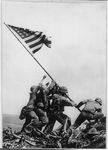 |
What led to the outbreak of WWII?The War to End all Wars was in fact only a precursor to a second, greater war, even more devastating and deadly than the First World War. What happened to spark off this even greater conflict, why did WWII happen, and how was it allowed to happen are just a few questions that will be examined in this lesson. This inquiry has students generate hypotheses as to why WWII broke out, revise those hypotheses through examination of a series of data sets, and then formulate and support a conclusion to the question: Just two decades after the Great War, what led to the outbreak of World War II? -Created by Jon Schellin |
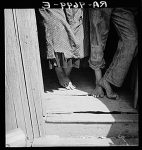 |
Why are some people rich and some people poor?This inquiry lesson asks students to brainstorm about possible causes of poverty, and then gather evidence in support of each hypothesis by examining datasets provided. They will seek to answer the following question: What explains inequality in our world; why are some people rich and some people poor? The goal of the lesson is not to come up with one right answer, but to discover more about the myriad causes of poverty around the world, which will help students be compassionate world citizens. It will help students recognize some of the factors that have contributed to their own privilege or underprivilege. It will also encourage students to accept the complexity of the problems that we face. This lesson is designed for an advanced economics class, although it could easily be adapted for use in a lower level economics class or a course on political science, geography, diversity, or current events. It could be tailored to motivate further study about trade, credit, environmental problems, governance, conflict, or any number of other related topics.- Created by Kate Arnold |
 |
Diet Inquiry LessonThe United States is one of the most advanced and sophisticated civilizations ever known. The average American lives comfortably, with a high standard of living. Our universities that facilitate scientific research are some of the best in the world and our medical knowledge reigns supreme. Yet, somehow, the United States has the highest rate of obesity on the planet! Given that we have advanced technology, abundant resources and superior medical knowledge, how are we less healthy than in the past? More disturbing is that Americans by in large do not seem to be overly concerned about this perplexing inconsistency, even though for the first time, physicians predict that parents will live longer than their children! Students are being asked to study this issue by comparing today's diet and lifestyle to those in the past. Through the inquiry process, students will share their own interpretations of the evidence and formulate their own tentative answers to the following question: In terms of both diet and lifestyle, why are Americans less healthy today than in the past?--Created by Robert (Chris) Knudsen |
 |
Cuban Missile CrisisThis is an inquiry lesson that focuses on communications between Khrushchev and Kennedy during the Cuban Missile Crisis. Along with these and other data sets students are asked to create hypotheses on why the Cuban Missile Crisis was able to end peacefully. Students will brainstorm hypotheses, and then will consider evidence that they encounter in each data set to find supporting evidence for one of their hypotheses. At the end of the lesson, students will write a position paper giving their reasons for why the Missile Crisis was able to end peacefully. The assessment will allow for the teacher to determine how well students are able to create an argument supported by the data sets. - Created by David Davis |
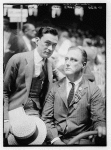 |
Franklin Delano Roosevelt's Third Inaugural AddressThis Socratic seminar is designed to engage students in a structured discussion about the values addressed in FDR's Third Inaugural Address, in which he discusses the importance of and need to maintain democracy in the United States FDR's central question of the vitality of democracy hints at the coming call to arms that the United States would answer in order to protect the democracies of Europe. This lesson allows students to discuss the concepts of democracy and proper citizenship from their own viewpoints, that of FDR, and theUnited States of the 1940's It will enable students to use higher order thinking while practicing cooperative discussion centered around a central question.-- Created by Katherine Francouer and Rachel Laresn |
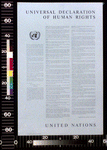 |
Universal Declaration of Human RightsIn this Socratic Seminar, students will examine The Universal Declaration of Human Rights in an analytical manner. On December 10, 1948, the United Nations General Assembly adopted the Declaration. The document was designed to outline and describe the basic human rights to which all human beings are entitled. The idea of human rights and what they constitute is an important subject to study, both historically and contemporarily. Students will identify, extract, and discuss the central themes of this document. The focus of the lesson is the discussion in which students will have the opportunity to expound on the ideas of the document while also engaging in a meaningful discussion about the impact this document has had on modern history.-- Created by Justin Nickel |
 |
Grading the Electoral CollegeThis Socratic Seminar focuses on elections and the intricacies of the Electoral College. It is important for students to understand how elections work and the role the Electoral College plays in the election of the president. The Electoral College is not without controversy, several elections have ended with the individual who won the popular vote not becoming president. The goal of this lesson is to help students gain a deeper understanding of the values, issues, and ideas in the text, and to actively listen, evaluate, and build on each other's comments. Students should also know how the Electoral College works and understand some of the reforms that have been proposed due to the controversies that have bitterly divided the nation.-- Created by Brad Blanke |

Why did Slavery Survive the American Revolution?
When the United States declared its independence in 1776, the slave population had grown to 500,000, about one-fifth of the new nation's residents. While Americans experienced a fight against an oppressive government in the Revolutionary War, African Americans saw an opportunity to claim freedom in the ideals of the Revolution and the reality of war. Ironically though, slavery continued to expand following the birth of a country built on egalitarian principles. The following lesson plan is a prototype of the Inquiry model in which students formulate hypotheses and investigate a series of data sets in order to calibrate their findings with the purpose of developing a reasoned response to the focus question: Why did the institution of slavery survive and expand into new territories after the War for Independence? This lesson offers an in-depth perspective of the young republic and its founding fathers by examining personal letters, pro-slavery petitions, and the rough draft of the Declaration of Independence. --Created by: Ben Prather
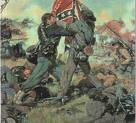
Why did the United States Civil War Occur?
At the beginning of 1860, the United States was in a place it had never been politically, morally, or religiously before. The fighting between Northern anti-slavery states and Southern pro-slavery states had escalated so far, that seven states decided in 1860 to secede from the Union. All the hostility came to a point on April 12th, 1861 with the Confederate attack on Fort Sumter. War was now inevitable. The United States Civil War was the bloodiest battle ever fought on U.S. territory. Over the next four years the North would fight the South, rich would fight the poor, plantation owners would fight manufacturers, and brothers would fight against their very own brothers. In this inquiry lesson students will generate hypotheses as to what caused the Civil War. They will continue to revise their hypotheses through an analysis of several data sets, some primary and some secondary, and then come to a conclusion to the question: Why did the United States Civil War occur? --Created by: Chrystal Clark
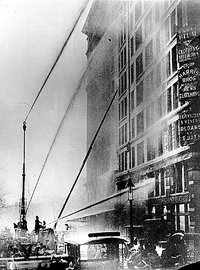
Why did the Triangle Fire Occur?
In this inquiry students will investigate the factors contributing to the Triangle Shirtwaist Factory fire of 1911. New York City with its diverse immigrant population and manufacturing base became a microcosm of the social, political, and economic changes resulting from industrialization and immigration. Students will learn to evaluate materials with different points of view on the same event and develop their skills in evaluating primary documents. This lesson has a strong link to the present in the evaluation of the continuing existence of sweatshop conditions in the U.S. and abroad and the economic benefit that the students themselves derive from these conditions. Students will evaluate various data sets to determine why it became such a tragedy. -- Created by: Kristina Shepard

Votes for Women- Why so Long?
Women's suffrage in the U.S. trailed over fifty years beyond the guarantee to vote for African American men in the 15th Amendment, despite over eighty years of struggle by the women's suffrage movement officially begun at the Seneca Falls Convention in 1848. Why did the passage of the 19th Amendment guaranteeing women (50% of the population) the right to vote, require such a tumultuous campaign of several generations? Stirrings of the women's suffrage movement can be traced back to Abigail Adams in a letter she wrote to her husband, John, as he collaborated in the drafting of the Declaration of Independence. Students will explore the various social and political obstacles that suffragettes in the U.S. encountered toward their goal of full enfranchisement. Students will explore various strategies employed by petitioning groups within a democracy, as well as the varied responses of a democratic government to petitioning groups. This lesson will expose students to how one disenfranchised group (women) eventually reached their goal via increasingly aggressive venues of confrontation. Within this historical context of social and political struggle, and the tactics adopted by suffrage supporters, students are encouraged to expand their understanding of social movements of other marginalized groups in U.S. society. --Created by: Louise Austin

Why did Women get the Vote in 1919?
The battle for female suffrage in the United States began with a small group of women nearly seventy years before the realization of their goal. Multiple generations of people fought for women's right to vote. Why did it take so long for women to get the vote? Was 1919 the magical year for women's suffrage? Was the political climate more ideal in the 20th century than the 19th? Did men finally just hand over the vote to women? Were the progressives of the time ready for this change? By completing this inquiry, students will analyze the complex struggle for women's suffrage. Students will be exposed to both pro- and anti-suffrage rhetoric that was used throughout the multi-generational campaign for suffrage. -- Created by: Emily Snyder

Why did the United States Fall into the Great Depression?
From 1929-1939 the United States fell into a Great Depression. The world, let alone the U.S., had never been witness to such a full-scale economic depression. Numerous factors contributed to its severity. Measures were taken national and locally to alleviate its repercussions. In this inquiry lesson students will generate hypotheses as to what caused the depression. Through the use of classroom discussion and the evaluation of the data sets students will revise their hypotheses. This inquiry lesson is important in that it allows students to infer upon the influence of each factor in the context of the question. Upon conclusion, students will formulate and develop concise conclusions to the question: "Why did the United States Fall into the Great Depression?" --Created by: Thomas Kong
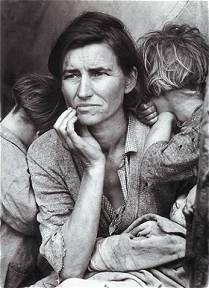
Why did the Great Depression Happen?
(Click here for corresponding PowerPoint)
The roaring 1920's was a prosperous time for the United States. Many people thought that the recovery from the first World War would continue and the nation would continue to prosper. However it seemed that things were to good to be true. From the years 1929 - 1939 the United States, and many parts of the industrialized world, felt the blows of a strong economic depression. It has been the longest and most severe depression recorded in United States History.
Why did the Great Depression happen? This is the question students will attempt to answer during this inquiry lesson. Students will be asked to generate hypotheses based on prior knowledge of the depression and on data sets provided to them by the instructor. Through small group and class discussions students will analyze and synthesize these hypotheses to form their own conclusions. These conclusions will be recorded in the form of an essay. -- Created by: Laura Kingston

What led to Desegregation in America?
The Civil Rights Movement was a set of legendary events in America aimed at gaining greater civil rights and abolishing acts of racial discrimination against African Americans. In this lesson, students learn about that movement through the process of Inquiry. In the Inquiry process, students formulate hypotheses and investigate a series of data sets in order to form a reasoned conclusion to the focus question: What led to desegregation in America? Examples of data sets include: excerpts from the Brown v. Board of Education (1954) ruling, Rosa Parks' police report, and a video clip of Malcolm X. Finally, students are presented with disconfirming data sets to promote discussion on whether or not the US is truly desegregated today. --Created by: Meghan Gamble
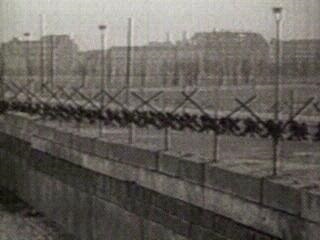
What Caused the Cold War?
After World War II the United States and the Soviet Union left the world on the brink of nuclear annihilation as peaceful collaboration to rebuild Europe seemed impossible. Citizens around the world pondered how relations between these two countries had turned so frigid. The following lesson plan is a prototype of the Inquiry model in which students formulate hypotheses and investigate a series of data sets in order to calibrate their findings with the purpose of developing a reasoned response to the focus question: What Caused the Cold War? This lesson delves into the origins of the cold war by examining the divisions between these two super powers in an attempt to illustrate the importance of diplomacy to the resolution of international conflict. --Created by: Jeff Clowes
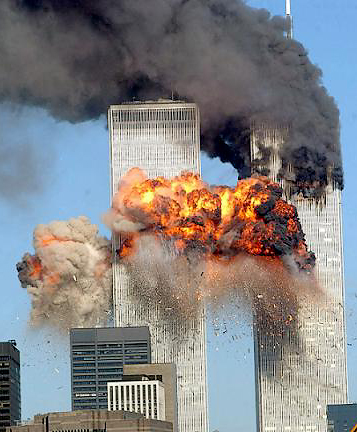
Why was the United States Attacked on September 11, 2001?
The lesson we are going to use for this section is known as an inquiry lesson. It is a lesson that focuses on a complex question that does not have one exact answer. This question is then analyzed by looking at primary and secondary sources that offer different perspectives from opposing viewpoints. The students have already been exposed to different inquiry lessons throughout the year. We have already looked at the Clinton administration and are just starting to study the early part of President Bush's first term. The students know that there were some very life-changing events that occurred early in Bush's presidency. This lesson plan will focus on a question that many people cannot give a well-informed response to even though it is one of the most widely talked about events in the last 50 years. This is the last inquiry of the year and focuses on a very important question that is connected to their lives both in and out of the classroom. The focus question the students are going to examine in this lesson plan is: W hy was the United States attacked on September 11, 2001? - -Created by: Matt Flynn

Why did the United States Invade Iraq in 2003?
After September 11th, 2001, the United States was forced to cope with a new kind of enemy; one without a face. Terrorists had infiltrated the United States and brought the battlefield onto American soil for the first time since Pearl Harbor. In order to prevent future attacks on the United States, President George W. Bush began to lobby Congress and international allies to join forces against rogue nations who could aid in assisting terrorists. One country in particular, Iraq, became the focus of the Administration's attention. Why was Iraq singled out as an imminent threat to the America? Students will study the information both preceding and following the March 2003 invasion in order to better understand the motivations of the United States. -- Created by: Mike Harris

